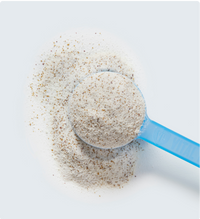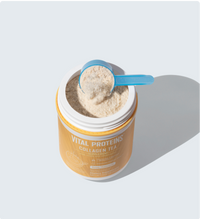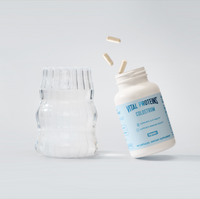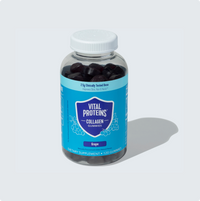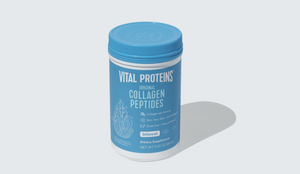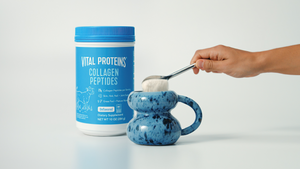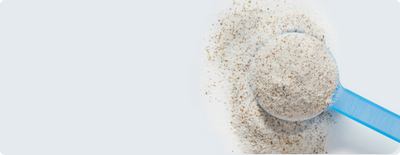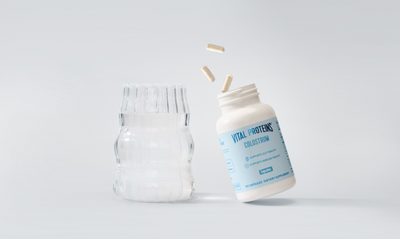Many of us have a strict skincare regimen, but not necessarily the same mindset when it comes to our scalp. That said, if you’re after strong, healthy hair (and who isn’t), your scalp needs some regular TLC to help make that happen. We recently synced up with a few experts when it comes to scalp care, scroll on to learn more about how you can create your own routine in the comfort of your home.

The Importance Of A Healthy Scalp
Before we dive into the how when it comes to scalp care, let’s talk about the why. Essentially, the condition of your scalp has a direct correlation to the health of your hair which is why it’s so important to take care of it. “Your scalp is your hair’s support system—it is the bedrock of your hair follicles and, as such, its condition impacts the health of your hair,” says Anabel Kingsley, Brand President and Consultant Trichologist of Philip Kingsley Products.
“People forget that our scalp is skin — which covers our whole body — and our skin protects us from injury, infection and helps regulate heat and moisture,” adds Martine Langsam, IAT, Certified Trichologist. She further notes that the scalp always has good and bad bacteria living on it, as well as sweat and oil glands that work to secrete toxins from our bodies. “A healthy scalp pH should be 5.5 — the proper pH helps control fungus and yeast overgrowth,” Langsam explains. “When the pH is off, we invite overgrowth of fungus, bacteria, infections, dry scalp, and dandruff. An unhealthy scalp will create a less than optimal environment for hair to grow in, and as a result, our hair can be dry, brittle, damaged, thin and weak.”
Where To Start With Your At-Home Scalp Care Routine
As Bridgette Hill, Certified Trichologist, explains, a proper scalp care routine mirrors a skincare routine, yet does not require a daily commitment. “Scalp care is the ‘skinification’ of hair care regimens and can be integrated with your regimen whether it is weekly, bi-weekly, or monthly,” she says. “How often a scalp treatment should be performed is based on individual factors such as genetic makeup; general health and wellbeing; hair type and texture; and lifestyle.” She adds that those with healthy-to-normal scalp conditions should do a scalp treatment at the minimum monthly, but bi-weekly is ideal.

How To Create A Healthy Scalp Routine
Here are the key steps to creating an effective scalp care routine:
1. Apply a scalp mask or oil
Hill says to begin first with an appropriate scalp mask or oil that “addresses the current needs of your scalp condition and provides cellular turn over and has anti-inflammatory properties.” She adds that to identify specific issues that should be addressed, ask yourself a few questions like whether your scalp feels itchy all the time. “If so, the culprit could be anything from dandruff to congestion—in other words, those scalp muscles just aren’t firing like they should be, and no wonder when you think about all the things we subject the scalp to, from hair color and keratin treatments to hair extensions and those weekly trips to the blow-dry bar where hair is exposed to excessive heat for long periods of time,” she says. When hair gets over-worked or over-processed, it can affect the scalp.
Kingsley seconds that you’ll want to look for a mask that doesn’t claim to do it all, but targets the current condition of your scalp — these masks can be “soothing, exfoliating, moisturizing, stimulating, anti-microbial, or a combination.” For example, you might check out Philip Kingsley’s Flaky/Itchy Scalp Mask to combat dandruff or flaking, the Soothing Scalp Mask to calm irritation, the Stimulating Scalp Mask if you have hair volume concerns or the Exfoliating Scalp Mask if you shampoo less than every other day for clarifying purposes.
The mask or oil should be applied to dry, unwashed hair and Hill says you can sleep in the treatment for optimal results (you might want to invest in a scalp pillow/pillowcase so as to not ruin your linens), otherwise most products recommend a processing time of at least 15-30 minutes.
2. Massage Your Scalp
Once your scalp pre-treatment has had some time to set, Madeleine Preston, MIT, FRSPH, Consultant Trichologist, suggests massaging your scalp for a few minutes by kneading the scalp with the pads of your fingertips. “This helps to stimulate the blood flow to your scalp which in turn helps to deliver nutrients to the follicles in the blood supply, as well as aids in the removal of waste products/toxins from your scalp.”

3. Lather Up With Shampoo
The next step is to shampoo your strands. “Like all your skin (or like your face), your scalp should be cleansed regularly,” says Kinsgley. “Shampoo daily if you have fine hair, but regardless of the hair texture you have, you shouldn’t leave more than 3 days between shampoos.” She points out that if you’re only washing your hair one to two times a week, it’s likely you will see flakes and experience itching. “One reason for this is that when you don’t shampoo, dead skin cells are left to accumulate on your scalp and become visible,” explains Kingsley.
Justin Anderson, Celebrity Hair Colorist and Co-Founder of dpHUE, makes an important point to avoid showering/shampooing with hot water as this can be excessively drying and make color fade faster. You might want to check out the company’s ACV Rinse as a substitute to traditional shampoo — Anderson notes it gently cleanses the hair without stripping it of its natural oils. And, if you’re in search of a few other scalp shampoos to look into, Hill recommends these: Rene Furterer Triphasic Strengthening Shampoo, Rene Futerer CURBICA Shampoo, Biologique Recherche Sebo-Reequilibrant, Biologique Recherche Traitant Dermo-Apaisant and Biologique Recherche Shampoo Traitant VIP O2.
4. Apply Conditioner
Now, Preston says you’ll want to apply a conditioner suited to your hair type and rinse well. “Condition your hair, not your scalp unless you are using a scalp conditioner,” says Langsam. “Conditioners are made to soften the cuticles of hair— your scalp does not have cuticles and some scalps can get irritated or buildup from conditioners."

5. Finish With A Lotion Or Serum
Hill recommends topping off your scalp care regimen by applying a topical water-based serum or lotion that promotes hair health or addresses your specific scalp concern. A couple of her suggestions include the Rene Furterer Triphasic Progressive Serum for hair shedding or loss, David Kingsley’s Soothing Scalp Therapy Tonic for an itchy or flaky scalp, and Fusion Meso Essential Lotion for those with healthy-to-normal scalp conditions. [Editor's note: We love Sunday Riley's Clean Rinse Clarifying Scalp Serum!]
6. Additional Tips For A Healthy Scalp
Our experts also had a few other great lifestyle suggestions and general tips for how to ensure a healthy scalp. For starters, always remember to apply SPF. Your scalp is skin and can get sunburnt just like the skin on your face — this is especially common along your parting, and to areas where hair is thinner. “At the very least, sunburn on your scalp can cause soreness, flaking and peeling,” says Kingsley. “I urge everyone to apply (and re-apply accordingly) sunblock to exposed areas of scalp, or to wear a hat when they sit in the sun.”
She adds that not shampooing enough is a “no-no,” as you want to ensure your scalp is clean and healthy, and to also avoid shampooing too hastily — make sure to spend approximately 60 seconds gently, yet firmly massaging your shampoo into your scalp and rinse. “It’s really important to realize that the aim of the game when you shampoo is to cleanse your scalp, which is a living, oil-producing, sweat secreting, skin cell shedding tissue,” she says.
Finally, Preston says that a balanced diet along with drinking plenty of water is important for scalp health and that if you’re experiencing any sort of redness, discomfort and hair loss, you might want to seek out a trained trichologist for expert advice.

